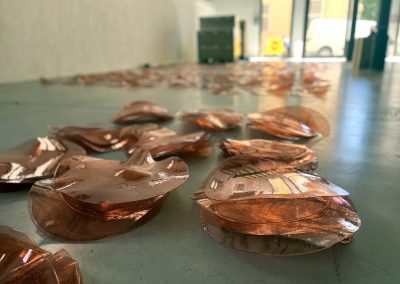The olive pits
Every year, Spain produces thousands of tonnes of olive pits, a resource that we can use as a local raw material and contribute to closing the production cycle of the olive sector.
Reolivar®
Reolivar is a project developed from the upcycling of olive pits that converts this resource into a variety of new circular and 100% biodegradable materials.
Earth and air
Reolivar Earth

Description
Characteristics
It is a 100% biodegradable material under natural conditions and fully circular, as once dry it can be re-melted with heat for reuse. It offers high mechanical strength properties and can be worked in the same way as wood, making it very versatile. Its natural texture is rough but it can also be sanded to a fine, smooth finish. Combined with natural dyes, a range of mass colours can be created which broadens its creative possibilities.
Processes
The mass can be poured into moulds to produce complex shapes without waste. The hardened material can be machined with tools such as CNC, laser, saw or lathe with the advantage that all scraps and shavings from the material can be reused. It can be used as an adhesive to weld parts together, facilitating the production of mono-material objects.
Reolivar Air

Description
Characteristics
It is 100% biodegradable under natural conditions and fully circular, as once dry it can be re-melted with heat for reuse. It conducts light well and its colour and level of transparency can be modified by natural dyes and other additives that give the material rougher textures.
Processes
The material is handled in a liquid state and can be poured into moulds to create complex shapes. Once dry, it can be manually trimmed with a knife or laser cut. This technology also allows the material to be engraved.




